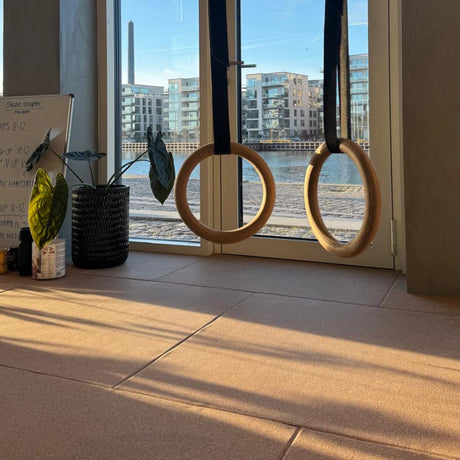Becoming self employed in the fitness industry can be an amazing journey but it’s not all fun and games. It requires more than just a love of working out. To thrive in this competitive industry you need to lay the foundations and equip yourself with the right tools for success.
Table of Contents
1. Get Proper Qualifications and Certifications
2. Get Adequate Insurance Cover
3. Develop a Full Marketing Strategy
5. Commit to Continuous Learning
6. Work Hard and Be Persistent
Here are the top 6 things you need in place to start your journey as a self employed personal trainer.
6 Essential Steps to be a Self Employed PT

1. Get Proper Qualifications and Certifications
Before you can start training clients you need to have the right qualifications and certifications.
Reputable certifications like REPs or CIMSPA are the most recognised in the UK. These certifications ensure you have the knowledge and skills to train your clients safely and effectively. Invest in quality training programs that cover anatomy, physiology, nutrition and exercise programming to build a strong foundation for your career. With the rise of online education, many personal trainers now opt for online certification programs, which offer flexibility and accessibility. These programs often provide specialized courses that can enhance your expertise in specific areas like strength training or sports nutrition. For example, the top picks for best online personal trainer certification offer a range of options to suit different career goals, helping you choose the right path for your professional growth.
In the US, several reputable organisations offer certifications for personal trainers like ACE, NASM and NSCA. Using resources like CSCS Free Practice Test by Trainer Academy is a great way to see what knowledge you currently have and what skills and qualifications you need to work towards.
2. Get Adequate Insurance Cover
As a self employed personal trainer you need to protect yourself and your clients with the right insurance cover. Public liability and professional indemnity insurance are essential to cover any accidents or injuries that may happen during training sessions. Consider getting personal accident insurance to safeguard your income if you’re unable to work due to injury or illness. Working without insurance not only puts you at financial risk but also undermines your professionalism.
3. Develop a Full Marketing Strategy
To attract clients and build a thriving business you need a solid marketing strategy. Start by identifying your target market and understanding their needs and wants. Use online platforms like social media, your website and fitness related forums to showcase your expertise and reach potential clients. Offer free content like workout tips, nutrition advice or motivational posts to establish yourself as an authority in the fitness industry. Don’t underestimate the power of word of mouth marketing - ask satisfied clients to refer their friends and family to you.
4. Build a Community
Networking is key to growing your client base and building valuable connections in the fitness community. Attend industry events, workshops and seminars to meet other professionals and potential clients. Join local fitness groups or clubs where you can interact with like minded people and share your knowledge and experience. Building a network not only opens up new opportunities but also provides support and inspiration as you navigate your career as a self employed personal trainer.
Here's some tips for engaging with your local fitness community:

5. Commit to Continuous Learning
The fitness industry is always evolving, new trends, techniques and technologies are emerging all the time. To stay competitive and deliver the best service to your clients commit to continuous learning. Attend workshops, seminars and conferences to stay up to date with the latest in exercise science and training methods. Consider pursuing specialised certifications or advanced training courses to expand your skill set and attract a wider client base. By investing in your ongoing education you’ll position yourself as a knowledgeable and trustworthy professional in the eyes of your clients.
6. Work Hard and Be Persistent

Building a successful career as a self employed personal trainer takes time, effort and perseverance. Be prepared to put in the hard work and graft to establish yourself in the industry. Stay motivated and focused on your goals even when things get tough or go wrong. Remember success doesn’t happen overnight but with determination and a positive mindset you can overcome obstacles and achieve your dreams. Stay adaptable and open to feedback, continuously refine your skills and services to meet the changing needs of your clients.
Likewise keeping physically active and committed to your own personal fitness goals is important. It communicates to your clients and potential customers that you take training seriously and lead by example. Having a home gym setup is not only the perfect way to ensure you get your own workouts covered, you can use this space for personal training sessions and is a great way to promote your business.
Customer Feedback: Topic "Importance of Personal Workout Space at-home"
"Building a gym at home has been the best decision I've made for my PT career. I can set up my space exactly how I need it for each client plus my members love the new location! It means I can be more flexible with work and family life also."
Summary
In summary becoming a self employed personal trainer requires planning, dedication and a willingness to invest in your professional development. By following these essential steps you can lay the foundations for a successful and fulfilling career in the fitness industry.
Looking to build a personal training studio? Browse our fitness flooring for the perfect foundation.





























